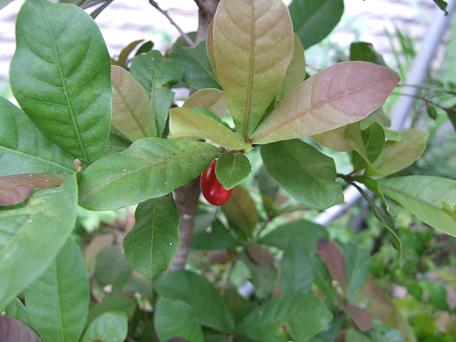Originating in Central America, Mamey has become common in the throughout Caribbean, Venezuela, Colombia, and Ecuador. It is widely cultivated in the American tropics, sold in produce markets and, to a lesser extent, supermarkets. Historical records indicate that the Mamey served as the principal source of food for Cortez and his soldiers during their march to Honduras in 1524. The fruit was a very important food source for the Mayan and Aztec civilizations.
Depending on weather it is grown from seed or grafted, and depending on the variety, the Mamey tree can take on a variety of forms. Larger seedling varieties can grow up to 30 m tall, grafted trees can be managed at a relatively low height. The fruit is large, 10 – 20 cm long, either round or oblong with a thick, rough peel. The bright reddish pulp surrounds a large shiny seed. The photos below show an exceptionally large fruit, the largest I have ever seen.
Good Mamey varieties can be very sweet and aromatic, eaten fresh, or used in fruit drinks and ice creams. In Central America the large seed kernel is traditionally toasted and ground with cacao to make a hot beverage. Medicinal properties are attributed to both the fruit and the seed. The fruit is rich in carbohydrates, vitamin A and C, calcium and phosphorous.



